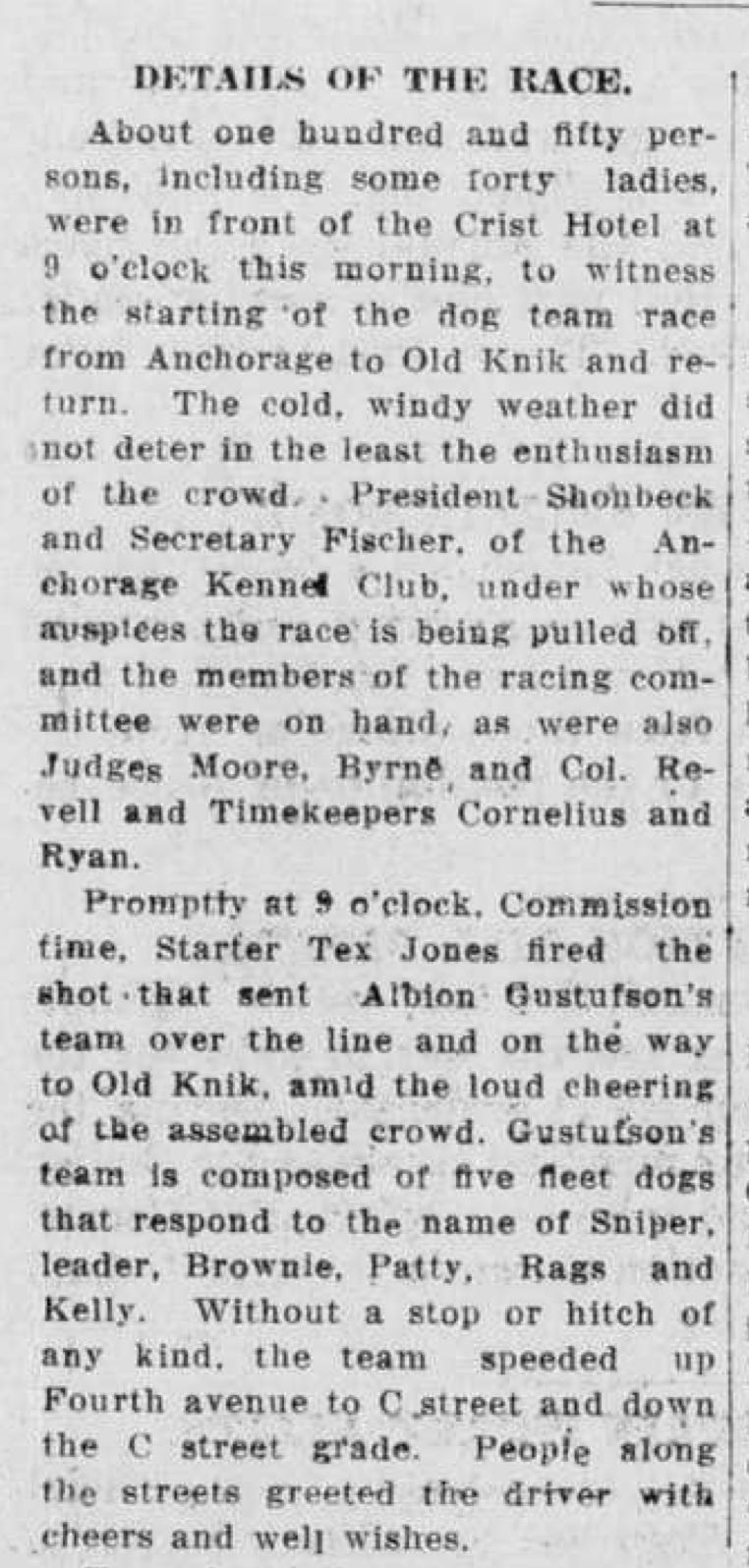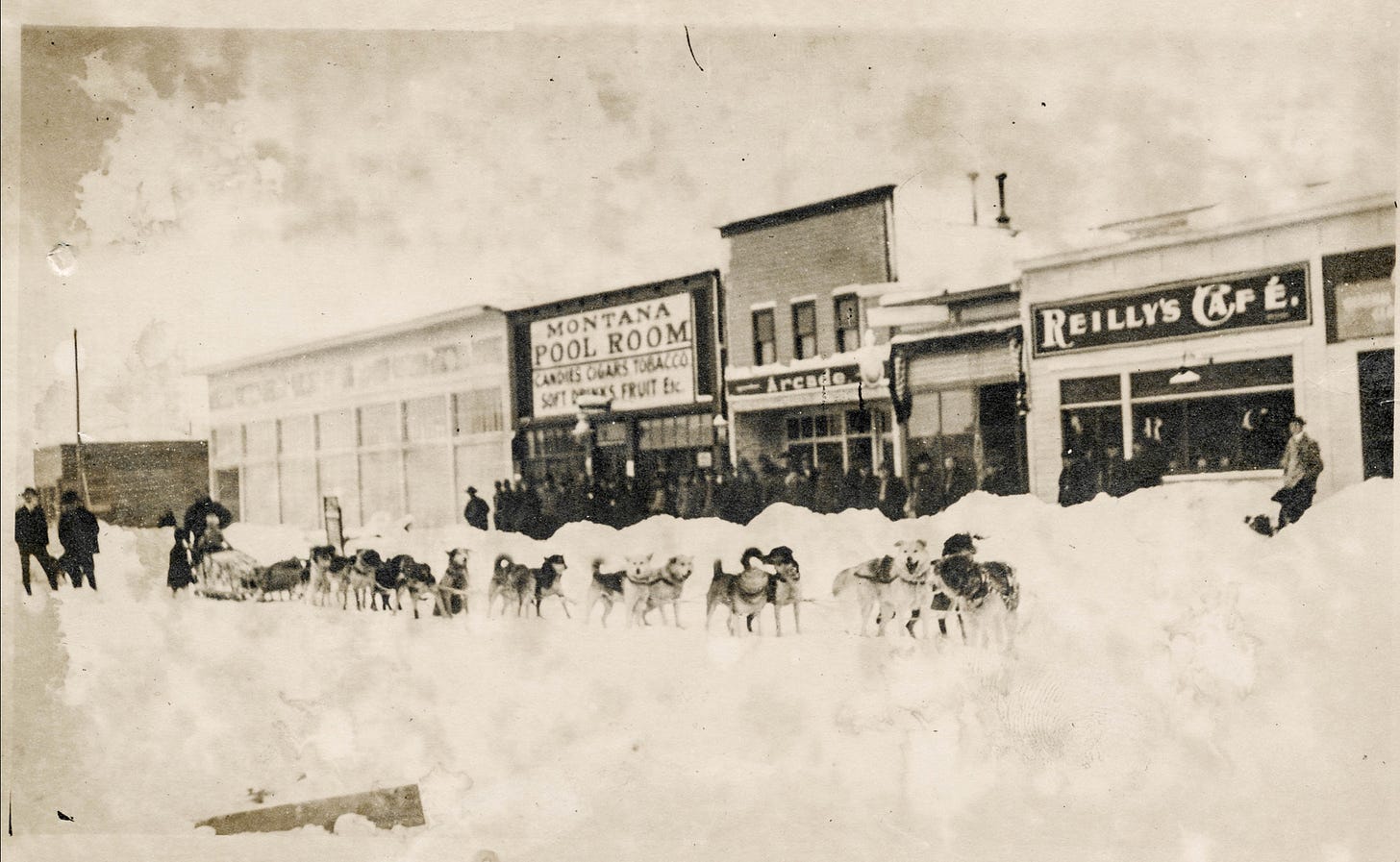Anchorage was a young but bustling city in 1916, only recently laid out into lots by the federal government and growing quickly as the new transportation and supply hub of Alaska. The railroad was still under construction, and ships were hampered by ice for half the year. Dog teams were the preferred overland mode of transportation from the first snows of late fall to the muddy breakup of spring, and the Iditarod Trail was the main route and mail trail between Seward and Nome.
Prior to Anchorage being selected as the headquarters site for the new federal railroad, the town of Knik, on the western side of Knik Arm, had been the center of transportation and trade. Travel over the Iditarod Trail was so heavy that in one week in 1911 more than 120 dog teams passed through Knik. With the coming of the railroad to Anchorage the nexus of activity changed, but dog teams remained the primary means of moving freight, gold, mail, and people.
In January of 1916--before the town was even a year old--the newly formed Anchorage Kennel Club sponsored its first race. Sled dog races were popular winter entertainment all across the territory at the time, and many such events were held in towns along the Iditarod Trail. The first sled dog race was held in Anchorage was a 54-mile route which started in front of the Crest Hotel on Fourth Avenue in downtown Anchorage. The teams ran to Old Knik, which was near present-day Eklutna at the head of Knik Arm, and back to Anchorage. The winning team of five dogs, driven by Frank Dixon, made the trip in 7 hours and 52 minutes. The second place team, seven dogs driven by Walter Howard of Knik, was seven minutes behind him.
The Cook Inlet Pioneer and Knik News newspaper recorded the results in detail in their January 22, 1916 issue:
There was an addendum to the race printed on the same page but half a dozen columns removed:










